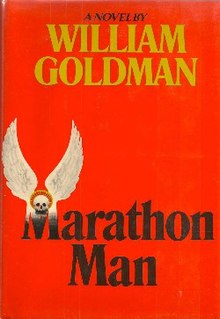
William Goldman was an American novelist, playwright, and screenwriter. He first came to prominence in the 1950s as a novelist before turning to screenwriting. Among other accolades, Goldman won two Academy Awards in both writing categories—once for Best Original Screenplay for Butch Cassidy and the Sundance Kid (1969) and once for Best Adapted Screenplay for All the President's Men (1976).

Mr. Deeds Goes to Town is a 1936 American comedy-drama romance film directed by Frank Capra and starring Gary Cooper and Jean Arthur in her first featured role. Based on the 1935 short story "Opera Hat" by Clarence Budington Kelland, which appeared in serial form in The American Magazine, the screenplay was written by Robert Riskin in his fifth collaboration with Frank Capra.

Doc Savage is a fictional character of the competent man hero type, who first appeared in American pulp magazines during the 1930s and 1940s. Real name Clark Savage Jr., he is a polymathic scientist, explorer, detective, and warrior who "rights wrongs and punishes evildoers." He was created by publisher Henry W. Ralston and editor John L. Nanovic at Street & Smith Publications, with additional material contributed by the series' main writer, Lester Dent. Doc Savage stories were published under the Kenneth Robeson name. The illustrations were by Walter Baumhofer, Paul Orban, Emery Clarke, Modest Stein, and Robert G. Harris.

Thomas Babington Macaulay, 1st Baron Macaulay, was a British historian and Whig politician, who served as the Secretary at War between 1839 and 1841, and as the Paymaster General between 1846 and 1848.

The Man in the Glass Booth is a 1975 American drama film directed by Arthur Hiller. The film was produced and released as part of the American Film Theatre, which adapted theatrical works for a subscription cinema series. The screenplay was adapted from Robert Shaw's 1967 novel and stage play, both of the same name. The novel was the second in a trilogy of novels, preceded by The Flag (1965), and followed by A Card from Morocco (1969).

Roy Richard Scheider was an American actor and amateur boxer. Described by AllMovie as "one of the most unique and distinguished of all Hollywood actors", he gained fame for his leading and supporting roles in celebrated films from the 1970s through to the early to mid-1980s. He was nominated for two Academy Awards, a Golden Globe Award, and a BAFTA Award.
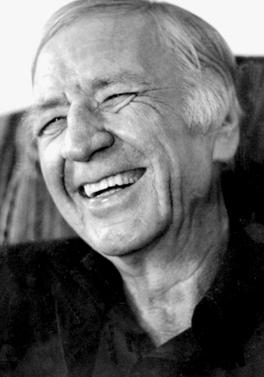
James Myers Thompson was an American prose writer and screenwriter, known for his hardboiled crime fiction.

Wilbur Addison Smith was a Northern Rhodesian-born British-South African novelist specializing in historical fiction about international involvement in Southern Africa across four centuries.

Anthony John Horowitz is an English novelist and screenwriter specialising in mystery and suspense. His works for children and young adult readers include the Alex Rider series featuring a 14-year-old British boy who spies for MI6, The Power of Five series, and The Diamond Brothers series.
Michael Lupica is an author and former American newspaper columnist, best known for his provocative commentary on sports in the New York Daily News and his appearances on ESPN.

Tales of St. Austin's is a collection of short stories and essays, all with a school theme, by P. G. Wodehouse. It was first published on 10 November 1903 by Adam & Charles Black, London, all except one item having previously appeared in the schoolboy magazines, The Captain and Public School Magazine.
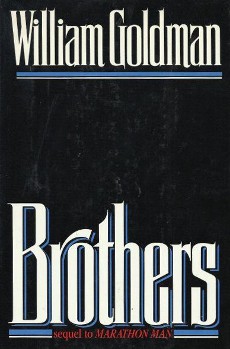
Brothers is a thriller novel by William Goldman. It is the sequel to his 1974 novel Marathon Man and is Goldman's final novel.

The Princess Bride: S. Morgenstern's Classic Tale of True Love and High Adventure, The "Good Parts" Version is a 1973 fantasy romance novel by American writer William Goldman. The book combines elements of comedy, adventure, fantasy, drama, romance, and fairy tale. It is metafictionally presented as an abridgment of a longer work by the fictional S. Morgenstern, and Goldman's "commentary" asides are constant throughout. It was originally published in the United States by Harcourt Brace, then later by Random House, while in the United Kingdom it was later published by Bloomsbury.
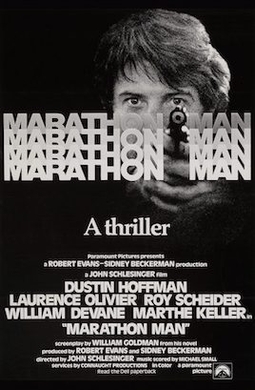
Marathon Man is a 1976 American thriller film directed by John Schlesinger. It was adapted by William Goldman from his 1974 novel of the same title and stars Dustin Hoffman, Laurence Olivier, Roy Scheider, William Devane and Marthe Keller. In the film, "Babe" Levy, a graduate student, becomes embroiled in a plot by Nazi war criminal Christian Szell to retrieve ill-gotten diamonds from a safe deposit box owned by Szell's dead brother. Babe becomes unwittingly involved due to his brother Doc's dealings with Szell.

Dennis Perry Tarnow is an American dentist specializing in periodontics, prosthodontics and implant dentistry and is known for his mark on dental implant research and education. He is currently director of implant dentistry at Columbia University College of Dental Medicine and former chairman of the department of periodontics and implant dentistry at New York University College of Dentistry. He is a sought after speaker on the subject of implant dentistry.

The Temple of Gold is a 1957 novel by William Goldman. It was Goldman's first novel, and launched his career.
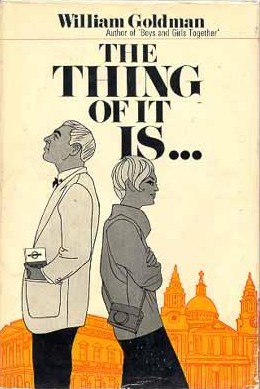
The Thing of It Is... is a 1967 novel written by William Goldman about Amos McCracken, a 31-year-old man who has written a popular show tune and who is having marriage troubles.

Tinsel is a 1979 novel written by William Goldman. It was the third of a four-book deal he had with Delacorte Press after Marathon Man and Magic. He called it "my Hollywood novel."
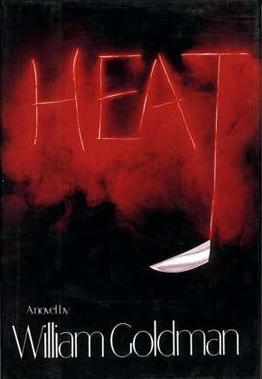
Heat is a 1985 novel by William Goldman about a soldier of fortune in Las Vegas.
